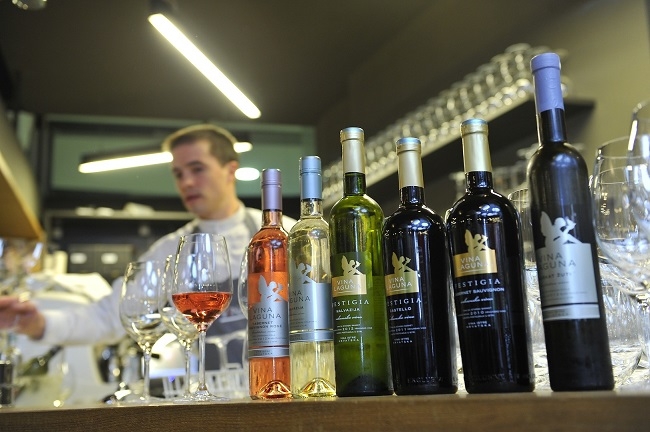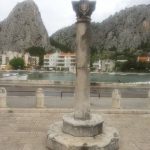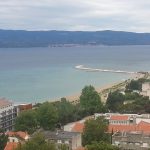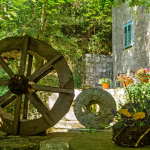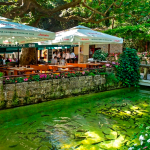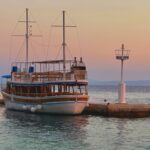I have been writing about wine for over 20 years, and I have never officially met Ivica Todorić, who was for a dozen years the largest Croatian winemaker. We met once. A long time ago. In the Munich airport we awaited if the last plane to Zagreb would take off that day. I was sitting and reading, and in raising my head and seeing a familiar face, I automatically said hello. He probably did not know who I am, but he answered politely and we exchanged several courteous sentences, probably common among people who don’t have an idea where they will sleep over. The plane arrived and we took off for home. At the time, Todorić, or rather his Agrokor, already owned Jaska Vina, which they took over some 20 years before. The winery was on the edge of failure. Wines were not good, the image was even worse and it looked like the love for wine might save it.
I did not see any other reason for their purchase of Jaska Vina. Hope was also kindled when Todorić brought in one of the most famous Croatian oenologists, mr. Franjo Francem. The winery had vineyards on excellent positions on Plešivica, which I consider the best subregion in Croatia, and a wonderful old cellar below the motocross track in Mladina. Jaska, the nickname of Jastrebarsko town, then also had family wineries which made huge strides, so there were no reasons for Jaska Vina not to at least follow them, if not surpass them. But other than individual ‘incidents’ with good wines, the winery which changed its name to Mladina, did not make progress.
Several years later, Todorić took over Belje. For a kuna, many would mock, but they keep silent on the millions of debt left by the previous owner Siegfried Rudolf Einhellig. Wine cellars were bankrupt, and the name Belje was not mentioned in decent wine company. But good grapes did grow.
Francem came back to Agrokor as the chief of wine in the concern, and invited us some 10 years ago to taste ‘his’ first Belje harvest – 2006. Even today I remember the Pinot Gris 2006 of the Belje winery. We tasted it in a wonderful house in the Baranja vineyards, lather colloquially named Boss’ Villa. They stopped making the excellent wine, stating they could not sell it. This is a problem of this variety which our average consumer does not know or understand, and it is one of the best and most unusual in the world. A white variety which can give wines whose colour is between pink and copper. I hazily remember the Rhine Riesling of the same harvest, also not available anymore, and other white wines were good. The red wines were still too young, ripening, so they did not offer them. It was the first harvest in Belje under Agrokor, and the beginning of the rise of one of the largest Croatian wineries.
Nest came world awards for Belje red wines. Gold medal and regional champion title at the Decanter rating in 2010 was given to a truly excellent Merlot 2008. Five stars and the title of the best Croatian wine went to Cabernet Sauvignon 2009 in 2015 at the Wine Stars, the broadest and strictest rating in Croatia. A year later it also won gold at the German rating Mundus Vini. Many gold medals came for the red wines of Belje in Bergamo, a kind of world championship of Merlot and Cabernet Sauvignon wines, and the cellar produced increasingly better Frankovka wines. The Frankovka Goldberg late harvest 2012 is remembered. But the Boss, as they said, pined for Graševina.
Agrokor invested 20 million euros in the new winery built below the vineyards. Huge stainless steel tanks, with electronic water cooling, decanting, filtering and other phases of vinification before bottling, can fit 8 million litres of wine. The old cellar in Kneževi Vinogradi was renovated with century old bricks from Vienna, bought after the careful demolition of a building and new wooden barrels for the aging of red wines. A tasting room and one of the largest wine archives are there too. It contains over 20.000 bottles, the oldest from 1949. Croatian wine archives don’t have pre-World War II wines as they were destroyed in fighting. They were not consumed but destroyed. During the Homeland War they did not destroy, or drink much, but they mixed up the bottles. At least that was the story in Baranja. Oenologists had a tough time solving that mess.
Agrokor’s plan was also to build a five star hotel in place of the office building, which would be connected with a tunnel with the old cellar. Cycling and walking paths were prepared with lookouts in vineyards, over 600 hectares of them owned by Vina Belje, some of them on the best Baranja positions. Several times per year we enjoyed there excellent wines and food, often with the closest associates of Todorić, who would talk with a glass or two or three, how much the Boss loves Belje and Graševina. We also heard how disappointed he was when the Great Harvest Graševina 2011 of Ilok Cellars was declared the second best of all rated white wines at the Wine Stars last year.
“Why isn’t our Graševina the best,” he supposedly asked.
I don’t know what they answered him, but I believe he was especially concerned that the Ilok Cellars Graševina was more appreciated than the one form Belje. Ilok Cellars were also part of Agrokor through some unusual arrangement, which included Istravino, and through it the large Macedonian vineyard Valandovo. With an unusual resolution of that arrangement, Ilok Cellars left Agrokor, and Valandovo remained.
Due to Graševina, the excellent oenologist Marijan Knežević had to leave Belje. Why all the global awards for Belje red wines were not confirmation enough of his good work, or was this the result of personal confrontation, no one knows officially. Fact is that Agrokor kept sending tutors for Knežević, mostly from abroad, not allowing him to do what he felt was best. Wine is a special product and who wants to be best, cannot ponder money. They realised this in Ilok Cellars, so they left the Great Harvest Graševina to ripen for five years, and Belje pushes the best Graševinas on the market in 14 to 15 months after the harvest. It is great to sell wine ahead of Christmas, but it would be better at Easter, so the winery image would be better as well.
The wine part of Belje was lucky that Knežević was replaced by his long-time associate, also an excellent oenologist, Suzana Zovko, who will, if the new managers will have the patience, certainly continue collecting global golds for the red wines, but also begin the same for the whites. And we will enjoy them. No matter how many hundreds of millions of kunas were invested in Belje’s farming, cattle, dairy and meat industry, the wine is their panache in quality. Even the cheapest ones are good, most are very good, and some are, not necessarily the most expensive ones, excellent. Cured meats products are good, but not more than that. Cheeses too.
But Agrokor made excellent cheeses in Istria, in a company that created a mess with names, so only a few understood what is Agrolaguna, or Laguna, renaming the wine portion known as Vina Laguna into Vina Istria this year. The cheese and oil factory were not even a separate brand. But that company was the first to be removed from Agrokor after the crisis began. Business media wrote of 51 percent of ownership was transferred to a caretaker account in the Kreditna Banka Zagreb, owned supposedly by the king of insurances Dubravko Grgić.
Whoever took over Agrolaguna, did good as the company is on solid foundations. Not much was invested in the buildings and appearance, and a lot into olives, vines and technology. Olive oils are an excellent buy as there are no mixed or varietal ones that can measure up in price and quality. Even the small bottles of excellent varietal oils Picholina, Pendoline, Ascolan, Lecino and Istrian Bjelica could be found in supermarkets, and such quality beyond specialised shops I did not find even in Italy and Spain. Hard cheeses from the Špin Stancija in Tar near Poreč were sold at discounts in Konzum under 100 kunas per kilogramme, also an incredible value for money. At eh Stancija and the wonderful vineyard lookout, one could enjoy a disk (the size of a wheel) or ripe hard cheese that was taken apart by hand.
A large hard cheese reminiscent of Parmesan or Grana Padano was not, as far as I know, sold outside the Stancija Špin. Maybe they did not even sell it at all, but treat company guests with it.
But they did sell and sell well, wines. Just like with Belje, all the categories were excellent value for money. Packaging such as bag-in-box I recommend to my adult children for parties as I believe they are correct, drinkable and no one who drinks them in reasonable amounts will be wrong. Laguna’s cheapest bottles, the Select line, priced under 40 kuna, are even better than the Belje ones. To be recommended are Malvazija, a mixture of red varieties Terra Rossa and the gentle red swet Muškar Ruža. Festigia is a better line and those wines, especially the reds, particularly the mixture of Merlot and Syrah Castello, also collected awards around the world. Their price is 80 kuna and can be offered to even more demanding guests. The highest Laguna class are Festigia Riserva wines, in which they bottle Malvazija and Cabernet Sauvignon, and for special occasions comes the Festigia Malvazija Vižinada Riserva. The wine bears the name of the wine growing position on white soil, which gives more character to wines than the red soil, bottled in 2013. The current Laguna wines got us used to good things, and the young team, led by oenologist Milan Budinski, is a guarantee we will continue to enjoy them.
Agrokor has a third large winery, Vupik. The agricultural giant has over 6.500 hectares with farming, cattle and 120 hectares of vineyards. They have been in Agrokor since 2010, but did not become a recognisable wine brand. They were said to be making exports to Russia, but it is a question if this is possible in the last years due to an embargo on exports to Putin’s empire.
During the time of cooperation with Istravino and that not completely clear business-ownership relation, the Agrokor win division also had a very good Dalmatian wine. It was the Plavac Mali of the agricultural cooperative from Ston on Pelješac. That wine form 2009 received in 2014, in the first season of Wine Stars, five stars. This means 95 points out of a 100, and the reviewers were not stingy with commendations.
“Full, juicy, elegant, ripe and savoury wine holds up its years well. This balanced Plavac fits well with meats in sauces and venison,” they described the wine whose bottle in Konzum was only 70 kuna.
All of these wineries were for a while brought together in Agrokor Wines, which can be seen today by the same bottles for cheap, mid and expensive wines, even in wineries which left the concern before the crisis. All the wineries could not function under the same roof, so they parted ways, and the wine trade was transferred to Jamnica.
It should be added that Agrokor, through Mladina, maintained for some time the vineyard around Tito’s villa in Samobor. Grapes were mixed with those from other vineyards to produce the cheapest wines. Maybe their quality was nothing to brag about, but selling Tito’s wine would surely have gone great. But that opportunity has gone.
The future of wineries which are or were part of Agrokor, was described well by Veljko Ostojić, Management President of Laguna.
“Whatever happens to Agrokor, vineyards, olives and cattle will remain a good business in Istria,” he said in March while Laguna was still part of the concern.
I can only add that the one who destroys Laguna and Belje should be put in jail, and the one who saves Vupik and Mladina a Nobel prize.
For the original and more from Vino.hr blog on wine, click here.

